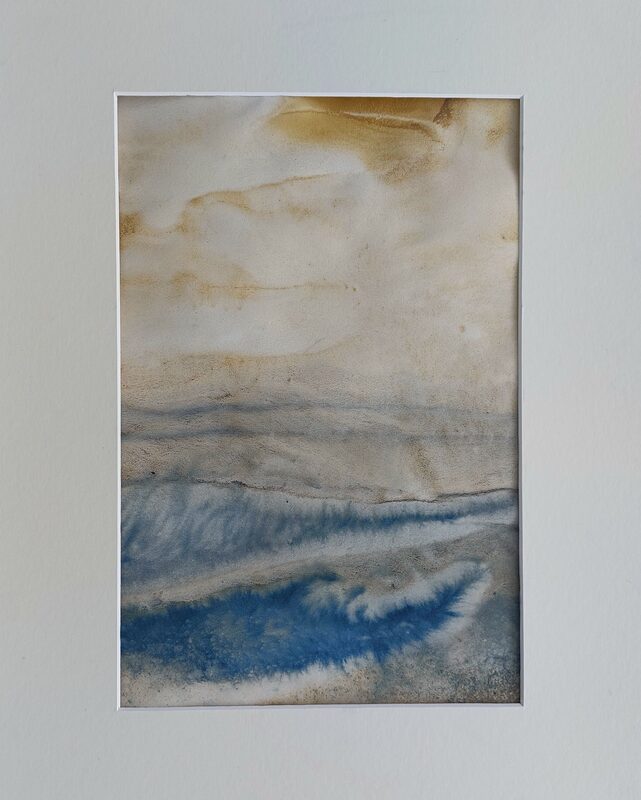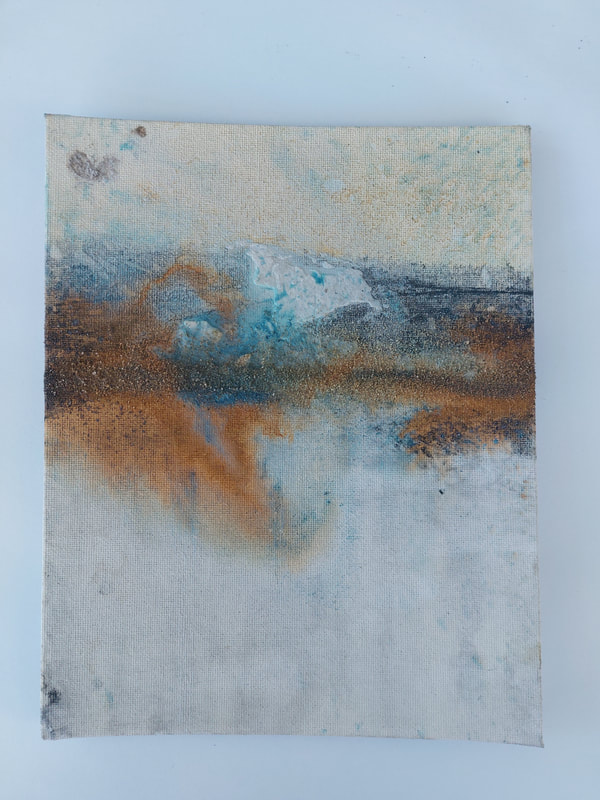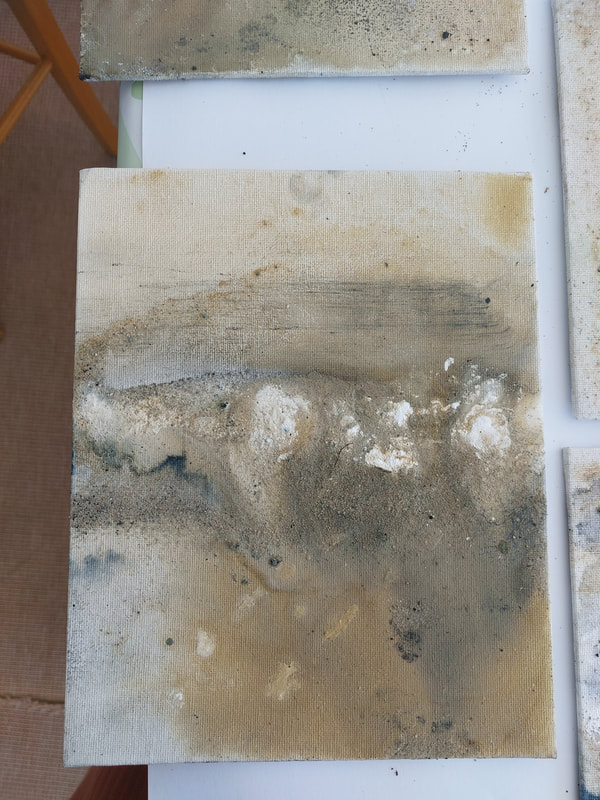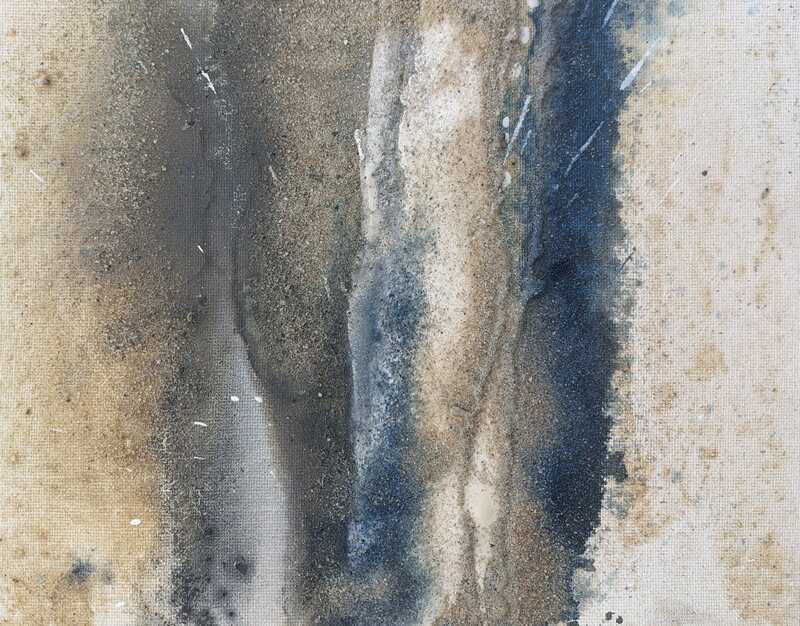|
With the influence of Turners work I've started to work on the concept of expression and a more painterly free flowing application to try and convey the viscerality of the elements. It's important that my intervention is minimal, and the main aspect is to allow the materials to merge and react with each other and that the work be open to the elements. I experimented with minimal applications on paper to try and form a more translucent finish (see above). The key to this work is the application of water. The water facilitates the free-flowing action of the materials and allows them to merge and settle randomly and organically. I came across some old small works on canvas board that I'd neglected and forgotten which sparked a different way of working and spurred me on to examine the painterly aspect I'm exploring on this more robust surface. The two pieces have spent much of their time outside being stripped down by the elements over the winter period before I rescued them and brought inside to dry, I applied a small amount of sand & cyanotype to see what would happen and there were some really nice results (see above 2nd row down). The added aspect of canvas board means I am able to apply thicker materials such as plaster as the board can take the weight. Love the idea of the elements working into the works and then rescuing the pieces and reworking onto the surface. This aspect gives more depth and authenticity to the work and portrays a succession of reworking and intervention of the elements... the passage of time, and so a process I am going on to explore. We had a fabulous presentation by the artist Lydia Ourahmane . (lydiaourahmane.com) talking about her life changing final year at Goldsmiths and the coming together of her piece for the final show 'The Third Choir'. Originally born in Algeria and experiencing a humbled, commune like early childhood she sees her practice as a 'tool to understand the world around her'. Her journey so far as an artist very much reflects the strength and determination needed to achieve her thought provoking pieces. Stretching continents, challenging bureaucracy and the term 'it's not possible' has not deterred her as she uses her resourcefulness and craft of living life in an almost nomadic transient way to gather her art installations together. I was especially interested in her project of archiving family photos of her early childhood and the importance of preserving these memories and lived experiences. For me it reminds me of the contrast of how we record memories in the 21st century and how the manipulation of images to be 'perfect' do not record a true record of that moment in time. Pre digitalization we didn't have the means to manipulate or delete images, we just snapped away and took film to be developed, never knowing how the images would turn out. The outcome was always a surprise, with many images (at the time) being seen as not all that good but looking at these images in later years a truer representation of those moments was recorded. Real expressions, unplanned records of place with random furniture, people or belongings in the background, a more honest social record of those moments and the time was captured. When we look back at these images, we have a real sense of those moments and our wider lived experience. Me & my Dad 1965She also spoke about how her work would carry on and how it would be disseminated in 300years time. There is much use of technology within art works today video, film, photography etc; how would these works survive and be exhibited in another 300years. It's a question that's similar to the way I've been viewing my own work; the problem of ephemeral work and the need to always record this work through photography and film and why I'm concentrating on working through making more physical 2D painterly works. Much of this concept is centred around the need to leave something physical when I'm not around anymore, the ephemerality of our lives and necessity to leave my mark. I really connected to Lydia's work because of its portrayal of her own heritage and the concepts of presence, what we leave behind and how these objects and moments are viewed by others. All this resonates with my own work the passage of time, the marks we and the elements leave and the legacy we leave of our presence.
0 Comments
Leave a Reply. |
|
















